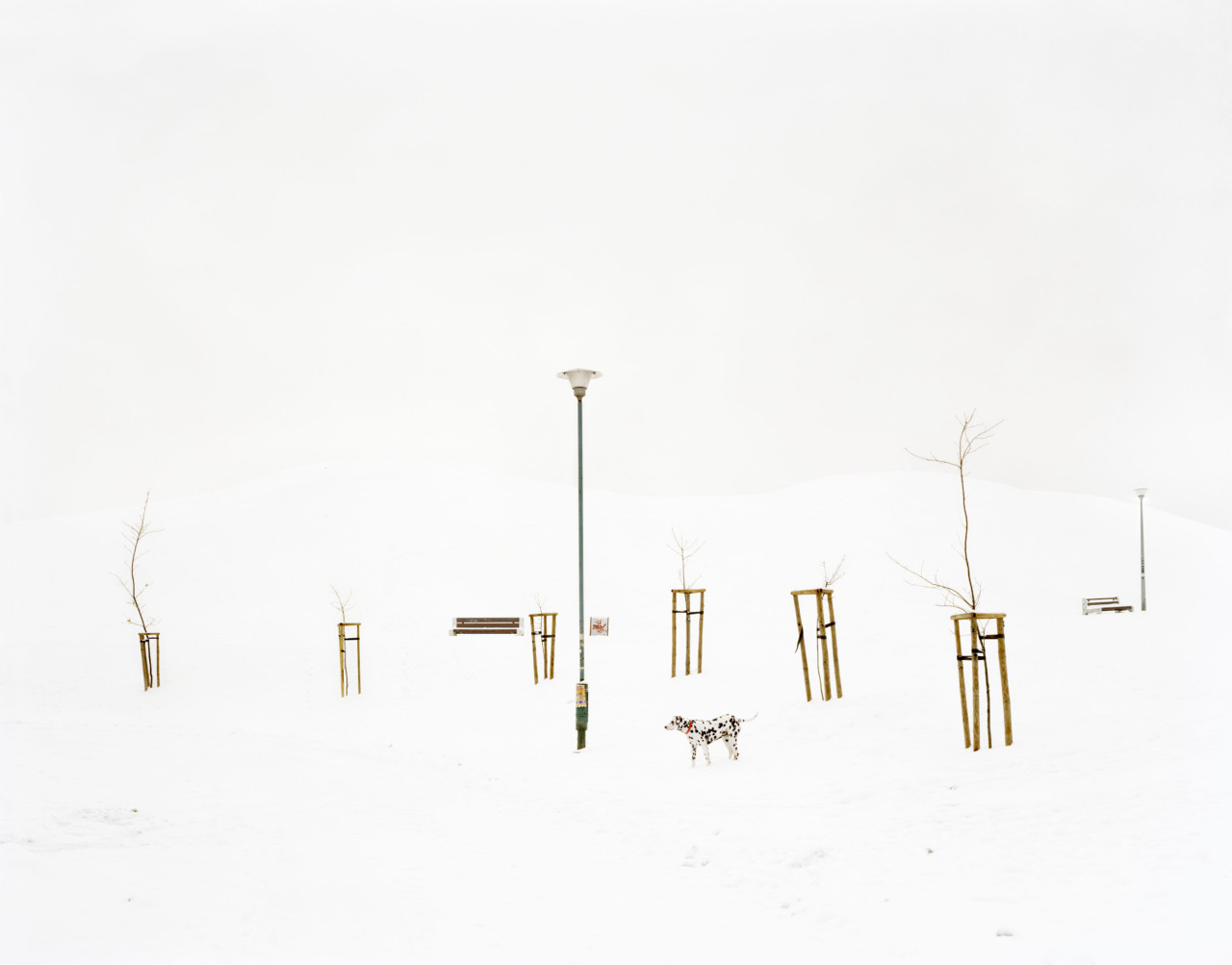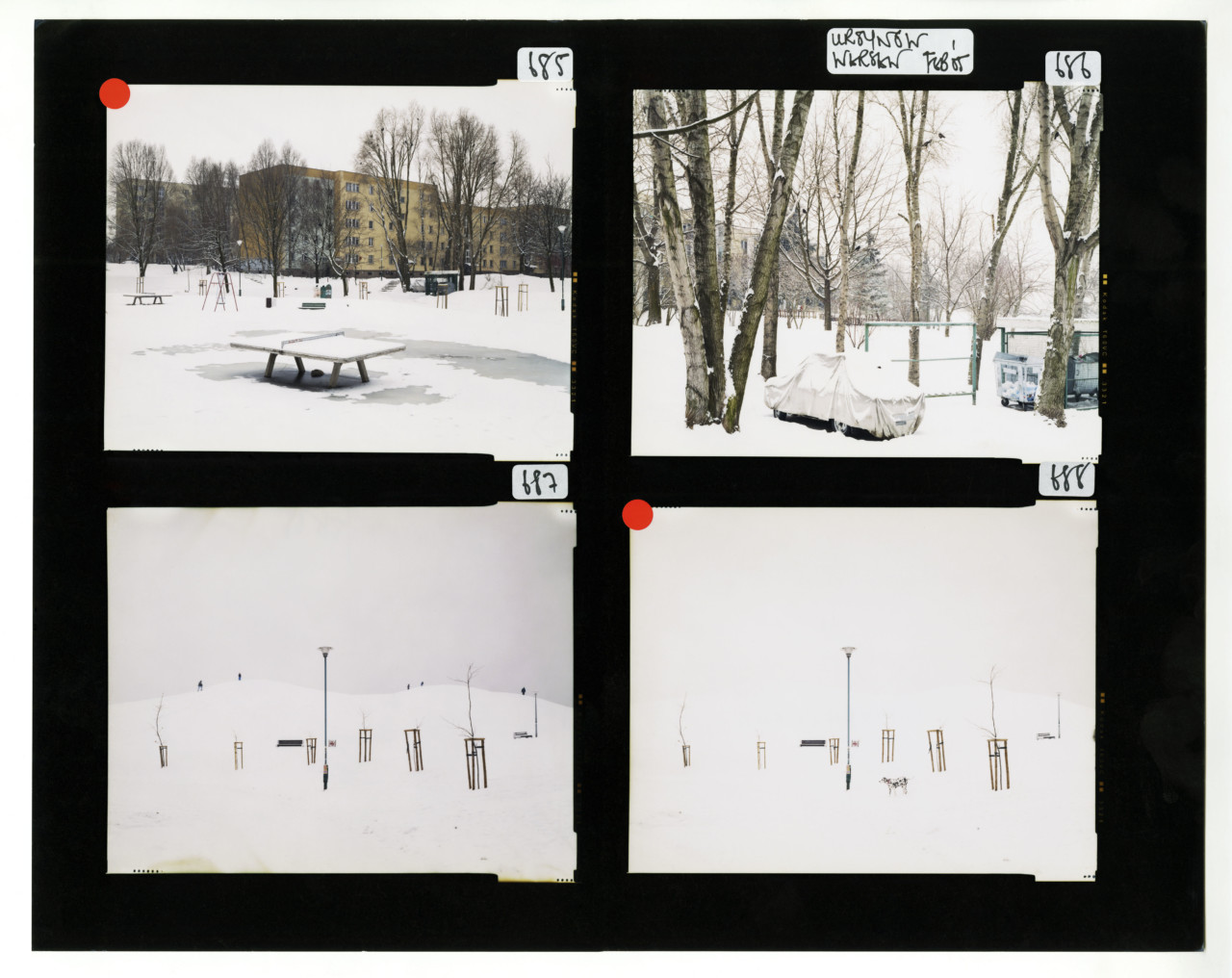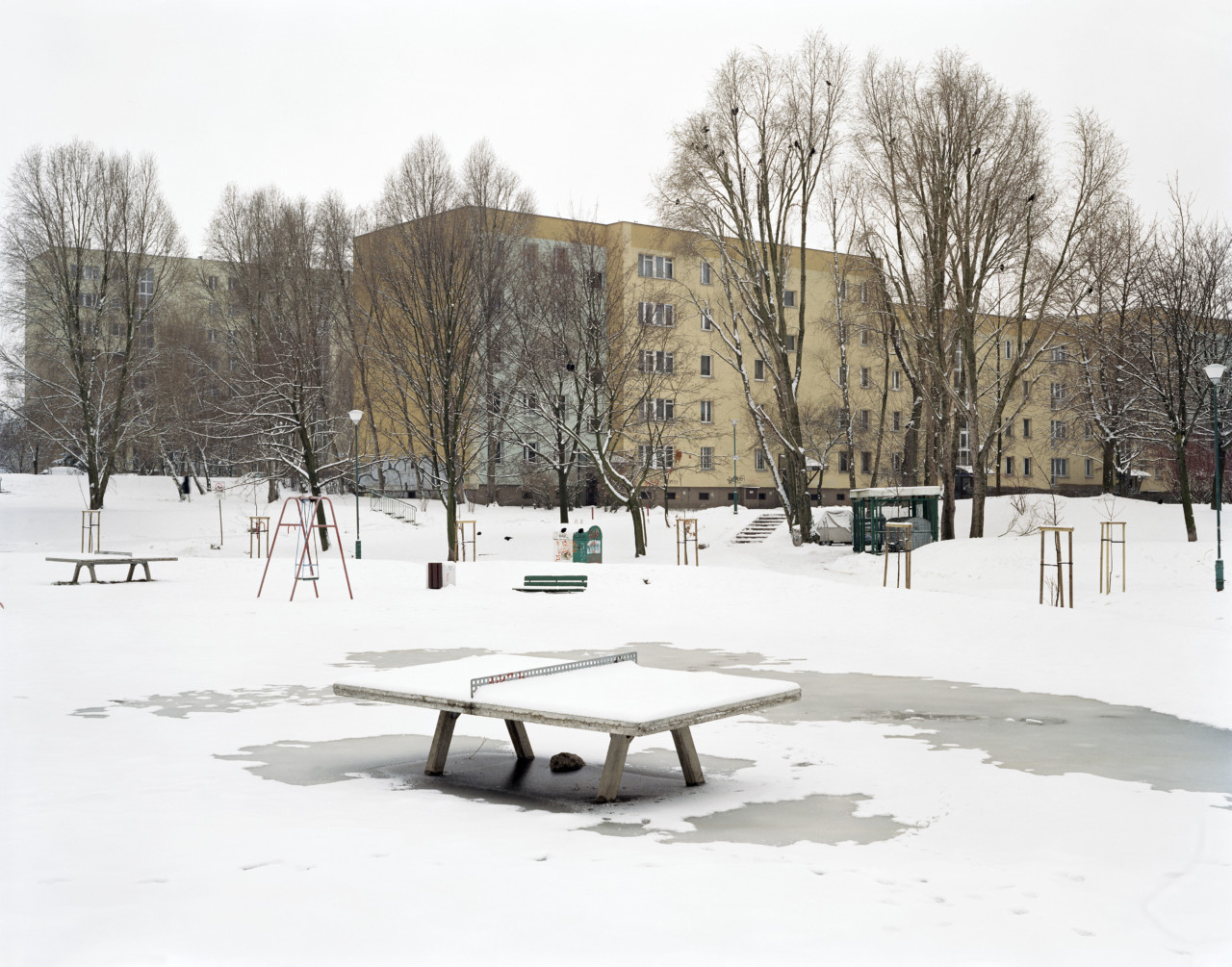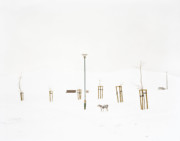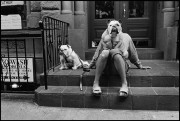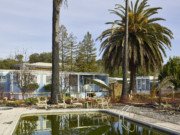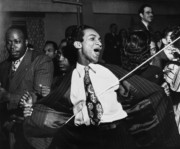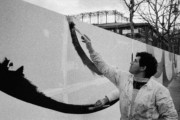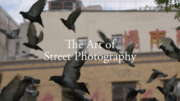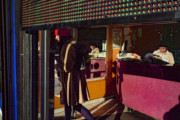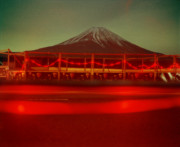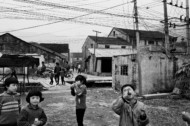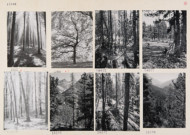Making the Image: Mark Power’s Dalmatian in Warsaw
A fortuitous series of events led the photographer to make the image that was to become the most recognisable of the project
Contact sheets: direct prints of sequences of negatives were – in the pre-digital era – key for photographers to be able to see what they had captured on their rolls of film. They formed a central part of editing and indexing practices, and in themselves became revealing of photographers’ approaches: the subtle refinements of the frame, lighting and subject from photograph to photograph, tracing the image-maker’s progress toward the final composition that they ultimately saw as their best. There is a voyeuristic aspect to looking at a contact sheet also: one can retrace the photographer’s movements through time and space, tracking their eye’s smallest twitches from left to right as their attention is drawn. It is as if one were inside their head, offered a privileged view through their very eyes from the front row of their brain.
As Kristen Lubben wrote in her introduction to the book, Magnum Contact Sheets, first published in 2011 by Thames and Hudson:
“Unique to each photographer’s approach, the contact is a record of how an image was constructed. Was it a set-up, or a serendipitous encounter? Did the photographer notice a scene with potential and diligently work it through to arrive at a successful image, or was the fabled ‘decisive moment’ at play? The contact sheet, now rendered obsolete by digital photography, embodies much of the appeal of photography itself: the sense of time unfolding, a durable trace of movement through space, an apparent authentication of photography’s claims to transparent representation of reality.”
You can read other entries in Magnum’s series on contact sheets, and the making of iconic images here.
Mark Power‘s book, The Sound of Two Songs, grew from his working in Poland as part of a Magnum Photos group project. While the project only called for photographers to work in a given location for one month, Power felt the need to spend more time in Poland, and eventually – after five more years of work – the project felt complete. While it remained an outsider’s view on the country, it is also a poetic and autobiographical portrait of a place Power came to love.
Below we reproduce Power’s entry from Magnum Contact Sheets, in which he takes us through the serendipitous series of events that led to his ‘Dalmatian’ photograph, which he describes as one of the most recognisable from the project.
“I had begun to work in Poland in September 2004, as part of Magnum’s Eurovisions project – ten photographers each visiting one of the ten new members of the European Union. My work there continued beyond that initial assignment, however, and I made a further twenty- five visits, amassing a much larger body of work over a period of five years.
This contact sheet contains my ‘Dalmatian’ picture, perhaps the most recognizable photograph from the series. It was a remarkable slice of good fortune. I had recently broken a lens, and Konrad (my guide, driver and assistant) had taken it to a man with a workshop deep in a forest somewhere on the outskirts of Warsaw. After the lens was fixed, it was picked up – by mistake – by someone who lived on the housing estate you see here. Early one Saturday morning Konrad and I set out to get it back.
In the middle of the estate was a small hill, down which several people were sledding. We were a little early, so I set up my tripod to take a picture. You can see two of the people on sleds in frame 687. I then noticed, over to my right, a Dalmatian that appeared to be walking straight into the view. It was quite dark, and the exposure would be one second, so, as it wandered across in front of me, I knew that unless it stopped there would be no picture. But stop it did, and in the right place, too. Looking at it now, I’ve no idea why it should have rested there: it hadn’t reached a tree or any specific landmark. Perhaps it just felt my strength of will and did it just for me.
So there it was: right dog, right place, right time. I pressed the cable release and prayed the dog would stay rigid for the whole second. Right at the end of the exposure it wagged its tail, so, in a big print, it’s possible to see a slight blur in its nether regions. But otherwise it’s pin-sharp. On the right you can see the owner just beginning to walk into the frame. She’s blurred, and in the print I always crop her out. Mist had descended since the previous picture, and the hill had lost its definition, but it’s still there … just. It’s also unfortunate that the sleds had disappeared. But no matter; it was still a remarkable piece of luck.
The picture perhaps marks the time when my work in Poland stopped trying to be about politics and economics and became more about photography instead. For this picture isn’t about anything more than that. It doesn’t mean anything. It is just what it is. And I rather like it for that. We got my lens back, too.”
Power is one of the tutors on Magnum’s online education course, The Art of Street Photography, you can find out more about the Magnum Learn course here.
This contact sheet is available as a print, on the Magnum Shop, here.


